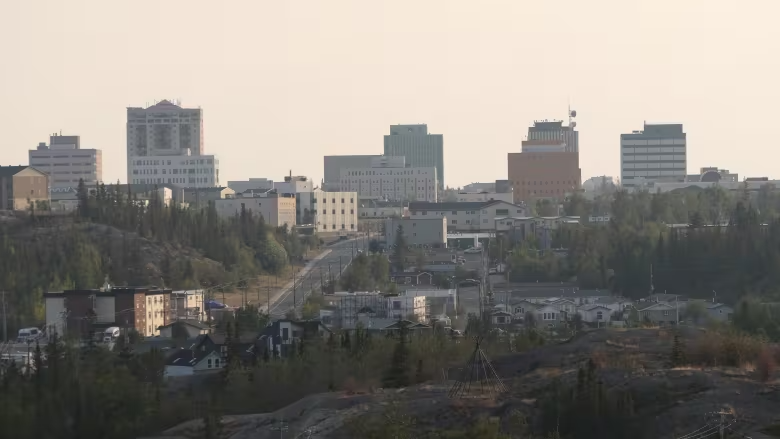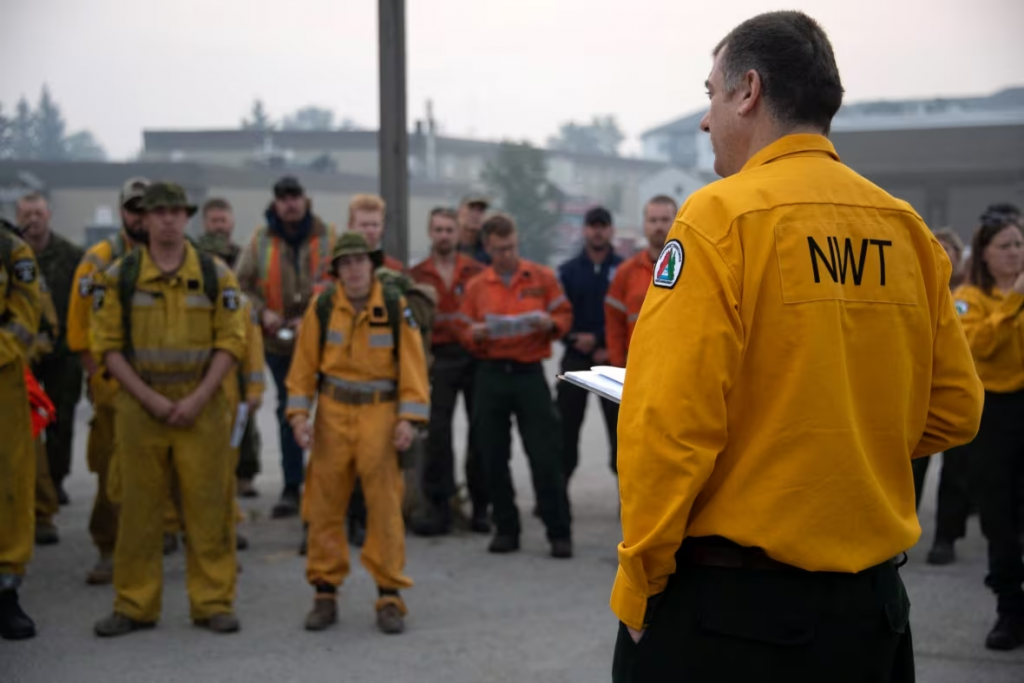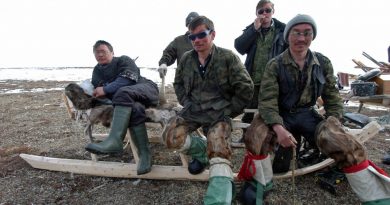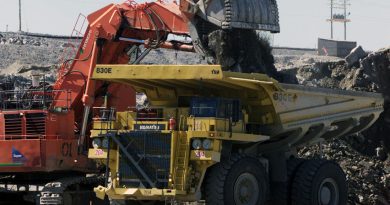N.W.T. will step up enforcement to prevent people from entering evacuated communities

RCMP say they will use enforcement at checkpoints
RCMP in the Northwest Territories say they’ll be delivering firm deterrence to the steady trickle of people trying to return to the communities — but they’re hoping to be able to get the message across without resorting to jail or fines.
At a Wednesday evening wildfire update, N.W.T. officials said existing evacuation orders have been updated to make it clear that anyone who is not an essential worker needs to leave the territory — and not come back.
Enforcement will be focused on the two staffed checkstops, one located at the junction of Highways 1 and 2, and the other located on Highway 3 at Kilometre 272 between Yellowknife and Behchokǫ, a community about 110 kilometres northwest of the capital city, said Jennifer Young, information officer for the territory’s emergency management organization.
“Please follow the instructions of staff at the checkstops,” Young said. “Those who refuse to follow these instructions will be reported to the RCMP.”
Penalties under the act include being taken into custody or fines up to $5,000, said RCMP Cpl. Matt Halstead.
But, as he pointed out, those penalties have existed since the start of the wildfire crisis and RCMP have opted instead for a softer approach — trying to address concerns, connect people with resources to leave and encourage them to leave on their own.

The updated orders won’t change the RCMP approach, he said.
“With the exception, I will say, of the roadblocks. We really need people to respect those. Those are lawfully placed and if we have to go down and assist with enforcement, then we can.”
Attempts to return
More than two-thirds of the N.W.T.’s 45,000-plus residents are living in evacuation centres and hotels as far away as Calgary and Winnipeg. They left by plane or by driving hundreds of kilometres to safety.
The 20,000 residents of Yellowknife were ordered out a week ago while other communities were evacuated before that.
On Wednesday, officials weren’t able to provide numbers on how many people have attempted to get through the roadblocks and get into an evacuated zone.
“Definitely in the Yellowknife area, we are getting consistent numbers throughout the day of people … trying to get back,” said Jeffrey Edison, the infrastructure department’s acting assistant deputy minister.
Some are from surrounding areas trying access food, others are people who want to check on their properties. Regardless of their intentions, Edison said, the result is that these individuals are holding up the delivery of fuel, medicine and other necessities that “support people who are in the city, who are trying to save the city.”
Fires holding steady
Despite warming temperatures and decreasing humidity on Wednesday, the wildfire situation was holding steady in most locations with crews continuing efforts to prevent flames from advancing toward communities, according to fire officials.
Fires were within 15 kilometres of Yellowknife, within eight kilometres of the hub city of Hay River and four kilometres from Fort Smith on the Alberta boundary. Crews continued to water bomb the fires and dig barriers down to the forest’s dirt floor to rob the fires of fuel.
Though forecasts of rising temperatures, no rain and shifting winds continue to be a worry, fire experts are taking several days to do infrared scans of several of the largest blazes, including the one outside the capital city, said Jessica Davey-Quantick, wildfire information officer for the Department of Environment and Climate Change.
- Evacuation registration for N.W.T. residents.
- Territorial wildfire updates. Report smoke or fire by calling 1-877-698-3473.
- Emergency response resources.
- The latest community statuses, including notices, alerts and orders.
- Additional information for evacuees.
The scans will provide information that will allow wildfire teams to plan next steps in the fight, she said.
“In coming days, we’ll have more information as these fires are assessed and our next steps are established. Right now it is not safe to return to these communities that have been evacuated,” she said.
“For now the best we can all do is just wait and see what’s coming.We’re going to get through this. It’s going to get better. Eventually,” she added with a smile, “it will snow.”
The N.W.T’s next wildfire update will be held on Friday.
Related stories from around the North:
Canada: Transport closures empty shelves, leaving some N.W.T. communities without groceries, CBC News
Norway: Smoke from Canadian wildfires forecast to reach Norway, The Associated Press
Russia: New NOAA report finds vast Siberian wildfires linked to Arctic warming, The Associated Press
United States: Wildfires in Anchorage? Climate change sparks disaster fears, The Associated Press



